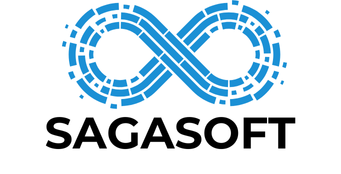AI employees transform business operations by automating complex tasks with precision and adaptability. These digital collaborators work nonstop, learn your brand’s nuances, and handle diverse roles—from marketing to data analysis—freeing human staff to focus on strategic growth. Understanding how AI workers integrate across industries reveals new paths to efficiency and innovation, reshaping the future workplace in tangible, measurable ways.
What Are AI Employees and How They Are Transforming Modern Workplaces
Modern businesses are redefining work by integrating ai employees into everyday operations. These digital workers go far beyond rule-based bots, harnessing advances in generative AI and large language models (LLMs) to tackle tasks spanning email management, social media scheduling, data analysis, sales outreach, and even customer support. Unlike traditional automation, their adaptability and context-driven responses help streamline repetitive routines, freeing up human staff for more creative and strategic challenges.
Additional reading : Unlocking the Future: Harnessing AI for Superior Predictive Maintenance in Aerospace Engineering
AI employees—also called AI agents or virtual assistants—function autonomously or in collaboration with humans. At the core, they rely on large-scale neural networks trained to understand language, analyze data, and generate tailored outputs. For instance, platforms like Sintra and Lindy showcase specialized agents capable of handling marketing, HR, analytics, or content creation, effortlessly scaling to serve multiple business profiles or departments.
Industry adoption is surging. Healthcare, finance, customer service, logistics, and legal fields are among those leveraging these technologies for continuous support, improved accuracy, and around-the-clock efficiency. As organizations deploy more AI-powered staff, trends point towards increased automation, lower operational costs, and the emergence of flexible, hybrid human-AI teams—reshaping the landscape of modern employment.
This might interest you : Revolutionize business expansion using cutting-edge ai workers
Key Benefits, Use Cases, and Real-World Applications of AI Employees
AI-powered employee assistants transform business operations through automation of repetitive business tasks, notably in marketing, customer support, HR, and data analysis. By integrating ai-driven productivity tools, organizations streamline processes, allowing teams to redirect focus towards creative or strategic goals. This approach exemplifies the core benefits of AI in workforce management: reduced manual workload and faster task completion.
Cost savings from AI employees are significant. With routine jobs like scheduling, lead follow-ups, and email creation handled by ai-powered employee assistants, companies experience staffing reductions or avoid additional hires. Virtual employee assistants in business promise round-the-clock efficiency—eliminating the need to wait for human shift changes—while driving consistent, measurable productivity gains.
Real-world deployments illustrate these impacts:
- Sintra’s virtual employee assistants automate workflows from social media posting to copywriting, providing tailored support and enabling cost savings from ai employees through operational efficiencies.
- Microsoft’s Copilot Studio delivers customizable ai-powered employee assistants that manage customer inquiries and internal scheduling, fitting seamlessly into existing workflows.
- Marblism enables businesses to engage AI for inbox management, content writing, and lead generation with simple instructions, harnessing the core benefits of ai in workforce with easy onboarding and deep integration.
By automating recurring duties, these ai-driven productivity tools foster a dynamic environment in which innovation and strategic growth thrive.
Challenges, Risks, and Ethical Considerations of AI Workforce Adoption
AI workforce integration transforms organizational operations, but introduces several hurdles that leaders must address. One prominent challenge is overcoming resistance among human teams. Employees may fear that ai-powered virtual assistants and virtual employee platforms will automate roles and reduce job security, making transparent communication and robust change management critical for a smooth transition.
Ethical concerns in ai employment are increasingly complex. Companies deploying ai-powered virtual assistants must prioritize ai employee data privacy and implement firm ai governance in workplaces. This involves handling sensitive information, complying with regulations like SOC 2, and maintaining data privacy in both customer and employee contexts.
Legal aspects of ai in employment, such as monitoring employees with ai technology, add layers of risk. Proper ai governance in workplaces is essential to prevent misuse of personal data, avoid biased decision-making, and address discrimination. Organizations need to craft responsible policies for ai employee training programs and set boundaries for virtual employee management, ensuring that human oversight remains strong.
As ai workforce integration accelerates, companies face the ongoing responsibility of adapting their ai governance frameworks, strengthening legal compliance, and building ethical ai workforce policies that foster trust and collaboration between humans and machines.
AI Employees vs Human Workers: Collaboration, Job Impact, and Evolving Roles
Hybrid human-AI collaboration is now central to the future of work with AI. Rather than simply replacing human tasks, most modern ai-powered virtual assistants like those on marblism.com and platforms such as Sintra support businesses by automating routine jobs and freeing up people for more strategic roles. For example, tasks such as data entry, basic inbox management, and social media scheduling are now typically managed by virtual employee platforms, resulting in measurable productivity gains from an AI workforce.
Collaboration models emphasize augmentation over replacement in effective collaboration between AI and employees. AI-driven productivity tools handle customer service queries, draft reports, and coordinate schedules, while humans focus on complex decision-making and personal engagement. This balance in managing ai-human teams allows companies to benefit from the efficiency of AI while preserving creativity and emotional intelligence.
Shifts in job responsibilities emerge as virtual employee management becomes more prevalent. AI employee roles in enterprises are constantly evolving, with roles like AI assistant improving productivity and supporting new business functions. Workers are increasingly expected to develop skills in training staff for AI collaboration and leveraging ai employee performance tracking to ensure high standards.
AI in employee performance reviews also introduces objective insights, while AI replacing repetitive jobs fosters a workplace where humans are empowered with technology for higher-value contributions.
Future Trends, Innovation, and Preparing for an AI-Augmented Workforce
The future of work with AI is rapidly evolving, shifting the landscape toward hybrid human-AI collaboration. AI employee training programs are becoming essential as companies explore strategies to upskill their staff for AI workforce integration. The most productive teams combine human creativity with ai-driven staff development and AI-powered virtual assistants, blending the strengths of each. Many companies are investing in ai literacy for staff to ensure seamless adoption of new technologies and foster an environment where employees and AI-enabled customer support staff can thrive together.
Emerging innovations include autonomous decision-making, where virtual employee management tools enable interconnected AI societies to operate with minimal human oversight. This trend unlocks the ability to scale ai company workforce capacity by distributing complex tasks and optimizing productivity gains from ai workforce systems. The rise of ai-driven productivity tools emphasizes the importance of managing AI-human teams effectively.
Preparing for continued growth in AI-powered employees means adopting robust ai employee training programs and establishing ethical ai workforce policies. Companies should look at case studies on ai workforce systems, focus on workforce automation trends, and implement clear governance to handle both new regulations and workplace dynamics, ensuring future readiness for an AI-augmented workplace.
The Evolving Landscape of AI Workforce Integration
Precision from the Stanford Question Answering Dataset (SQuAD) method reveals that ai workforce integration transforms modern businesses by automating workflows, enabling round-the-clock availability, and supporting a hybrid human-ai collaboration model. AI-powered virtual assistants and AI-driven productivity tools now handle a spectrum of operational tasks, from virtual employee management to ai employee performance tracking and even facilitating ai employee training programs for smoother transitions.
Integrating ai workforce solutions enhances efficiency by assigning routine or repetitive jobs to virtual employees. This strategic employee-technology pairing not only improves productivity but also enables staff to focus on complex problem-solving, thereby shaping the future of work with ai. Platforms like marblism.com demonstrate how ai-powered virtual assistants and virtual employee platforms scale company workforce capacity, reducing dependence on traditional staff and offering more flexibility.
However, successful adoption requires careful planning to address the challenges of ai adoption in business, including concerns about ethical concerns in ai employment, the need for clear governance, and employee buy-in. Robust onboarding processes, ongoing support, and transparent communication about the benefits of ai in workforce operations can reduce resistance and foster trust.
As industries transition to more digital workplaces, the impact of automation on jobs, employee roles, and workplace culture is profound, requiring adaptive workforce management and continuous reskilling alongside the deployment of best ai workforce solutions.











